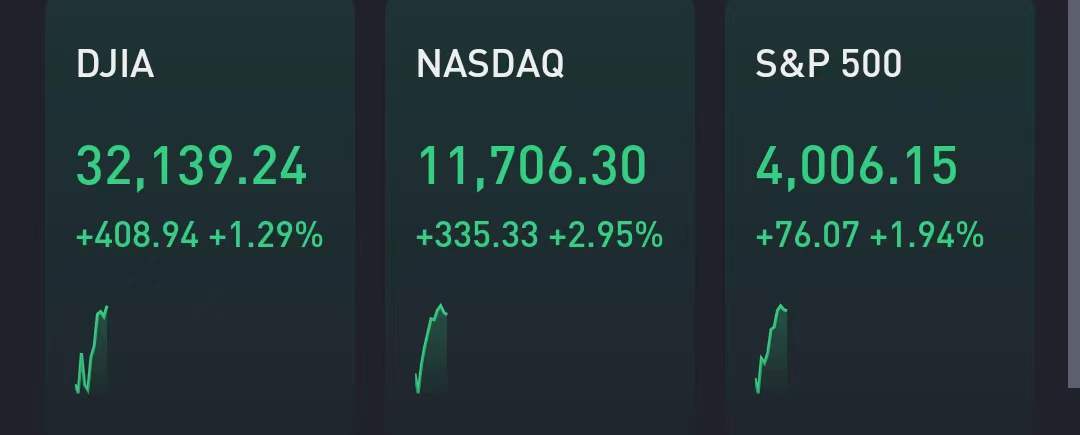U.S. stocks gained Friday, shaking off some losses from earlier this week after concerns over persistent inflation and the resilience of the U.S. economy stirred up further volatility in recent sessions.
The Dow Jones Industrial Average rose 408.94 points, or 1.29% to 32,139.
The S&P 500 was traded higher by 76.07 points, or 1.94%, at 4,006.15, while the Nasdaq Composite gained 335 points, or 2.95%, to 11,706.
Just a day earlier, the S&P 500 had closed within striking distance of a bear market, typically defined as a close of at least 20% from a recent record high. The index has declined by just over 18% from its Jan. 3 record high through Thursday's close, and it paced toward a weekly drop of 4.7% if levels hold through the end of Friday's session.
The Dow Jones Industrial Average and Nasdaq Composite each also headed for weekly losses of 3.6% and 6.4%, respectively, based on Thursday's closing prices. Treasury yields have spiked and then pared gains back this week, with the benchmark 10-year Treasury yield hovering around 2.9% Friday morning. Bitcoin prices recovered to trade above $30,000 after setting the lowest level since Dec. 2020, as a cratering in prices of Luna further reverberated across the broader cryptocurrency market.
The market gyrations this week coincided with two major inflation reports that came in hotter-than-expected. Thursday's Producer Price Index showed an 11% year-over-year rise in wholesale prices last month, with this rate moderating only slightly from March's all-time high rate of 11.5%. And the Consumer Price Index released earlier this week showed a still-elevated 8.3% annual increase in prices paid by consumers last month.
Other strategists agreed that the Fed's response to inflation — and how well the economy holds up as the Fed tightens financial conditions to address inflation — will be the key factor to watch going forward for the markets.

